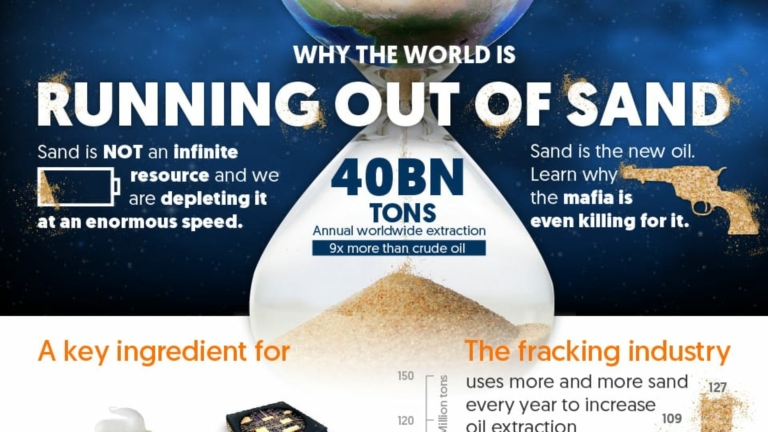Sand is the world’s second most extracted resource after water, and it’s not renewing itself as quickly as we are using it. Construction is the number one use for sand, as it is used as a base for concrete – a cheap and sturdy building material.
Due to an ever growing population, the need for urbanization and infrastructure is increasing around the globe – so demand for sand won’t be slowing down any time soon.
However, our overuse of marine sand is depleting our beaches, and they are retreating more and more every year. Experts predict that many of our beaches could be gone by the next century if we don’t invest in greener, alternative building, and housing methods.
The below infographic by TradeMachines which explains how the world is running out of the sand.




